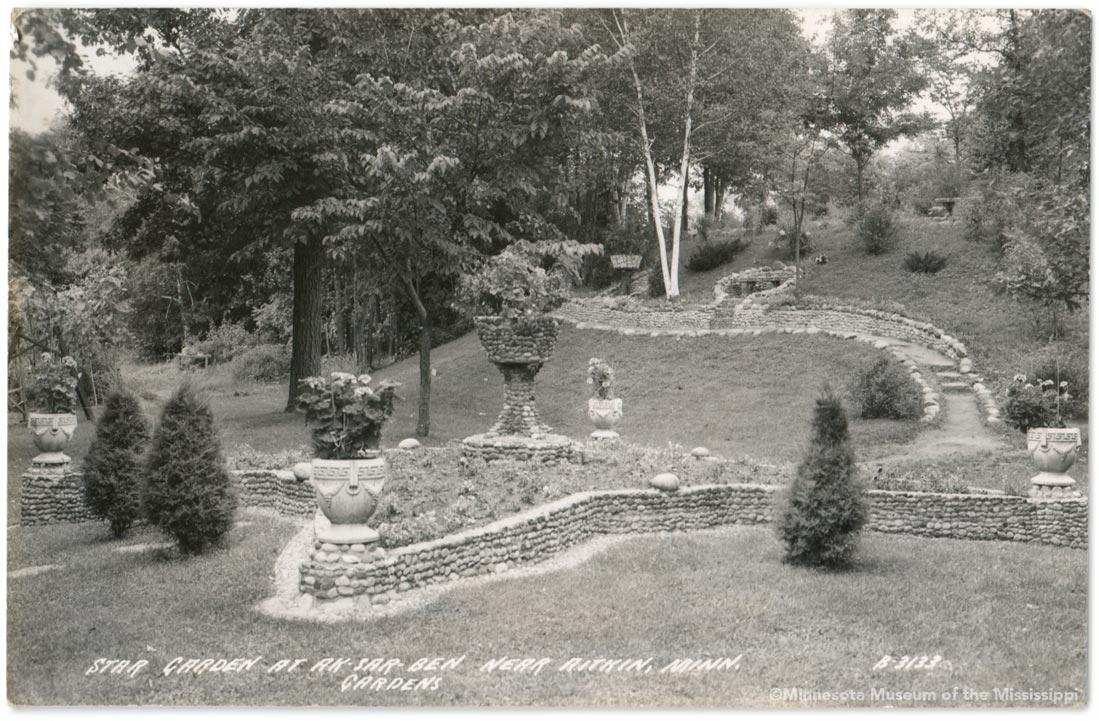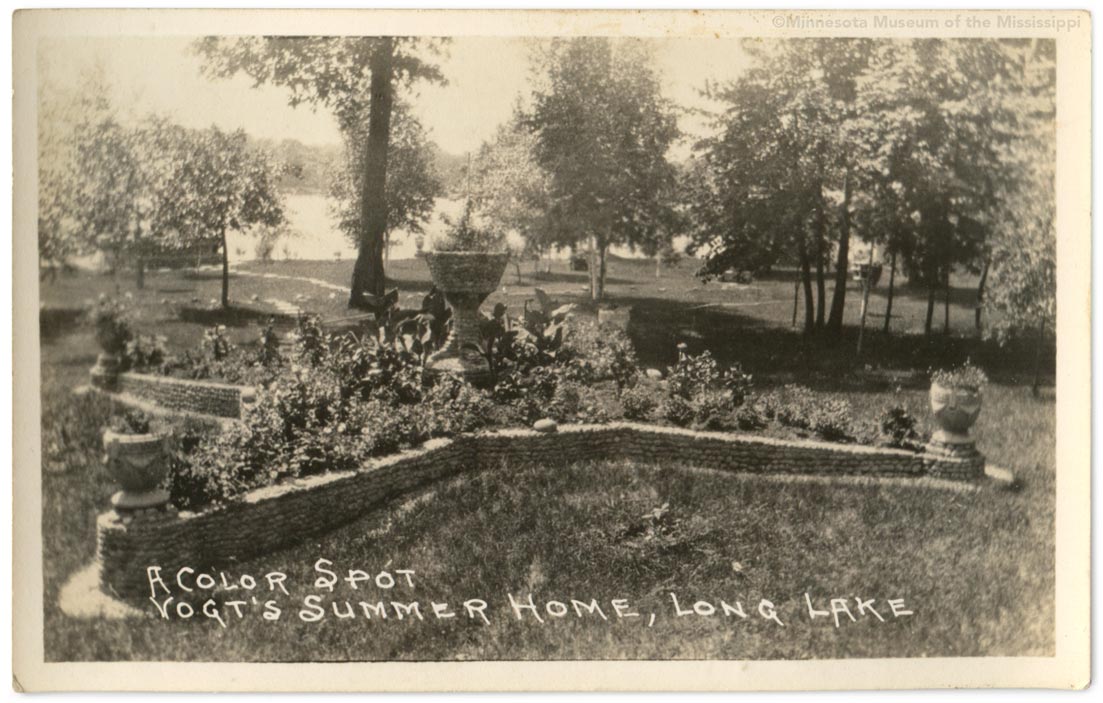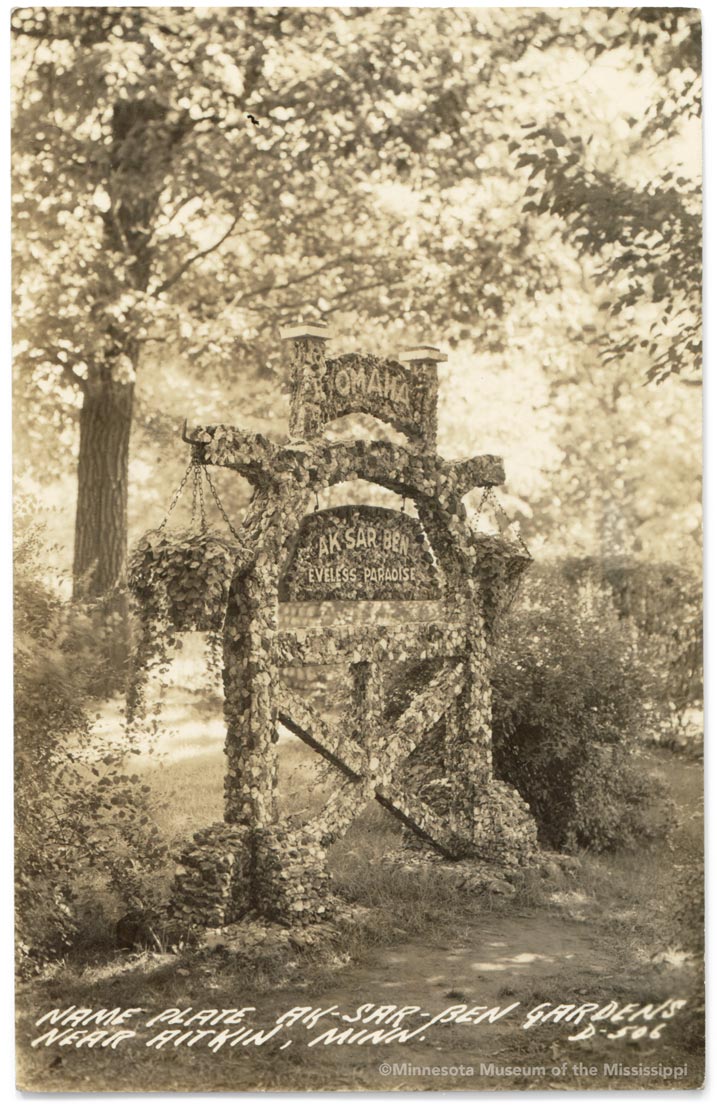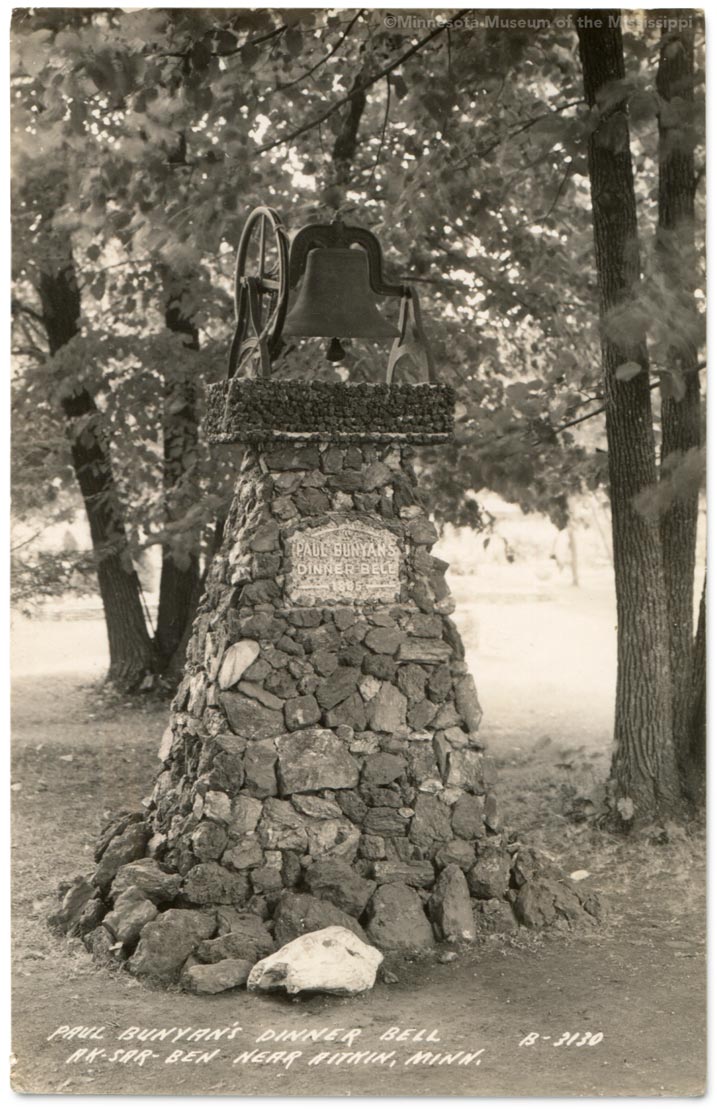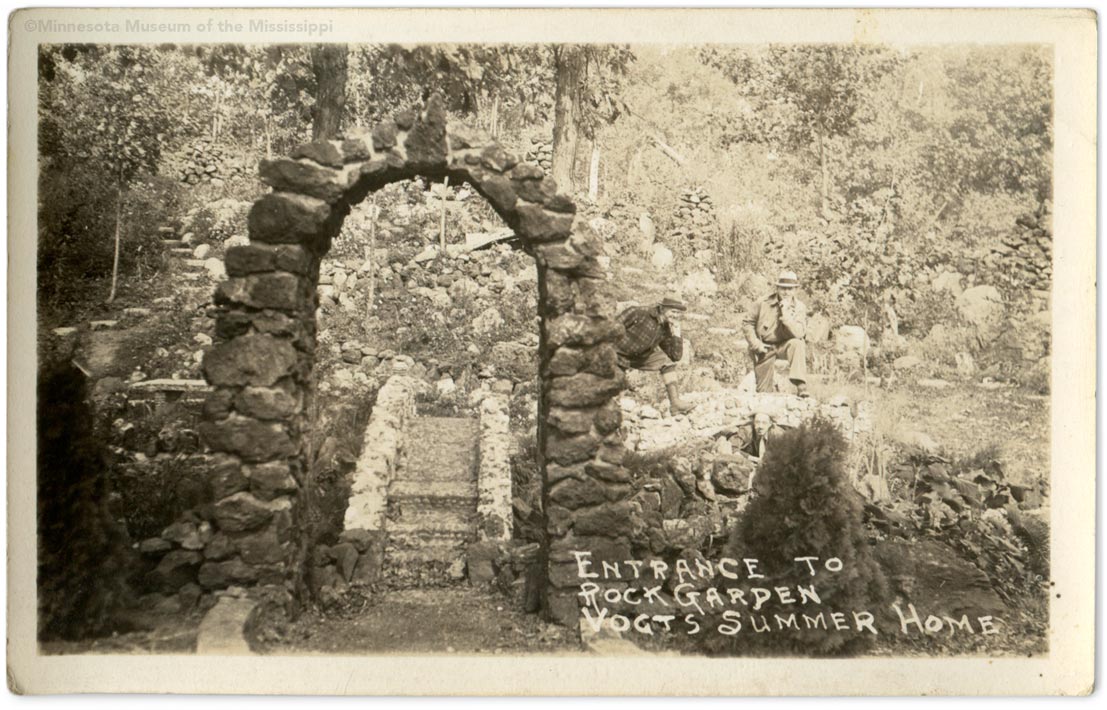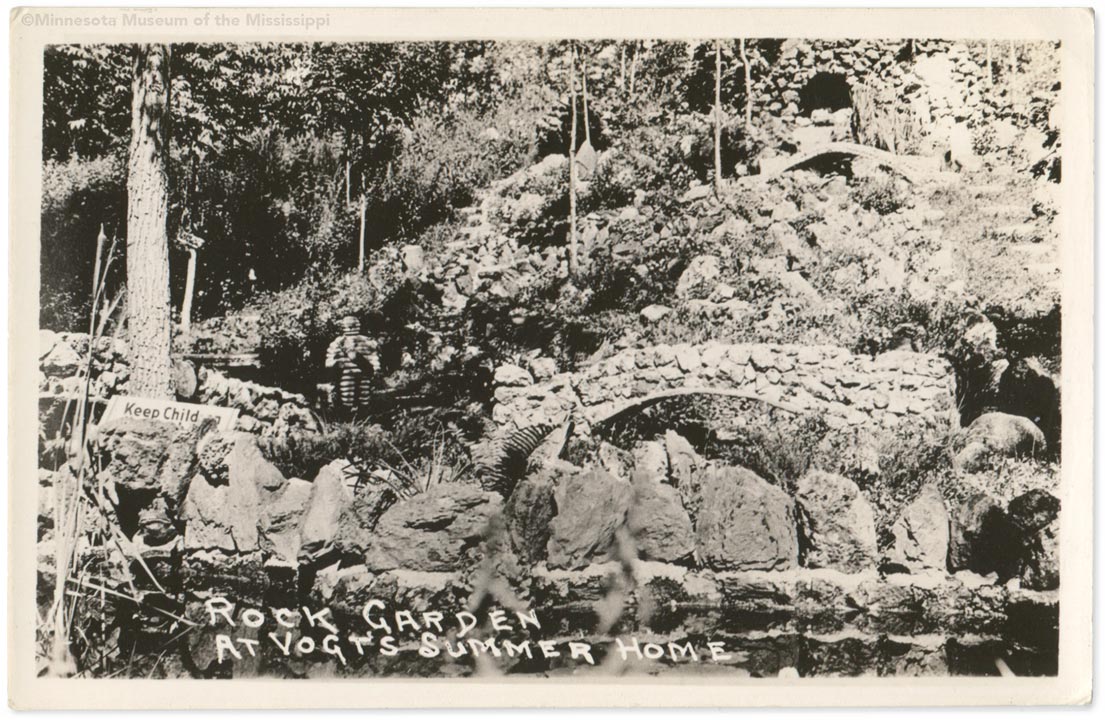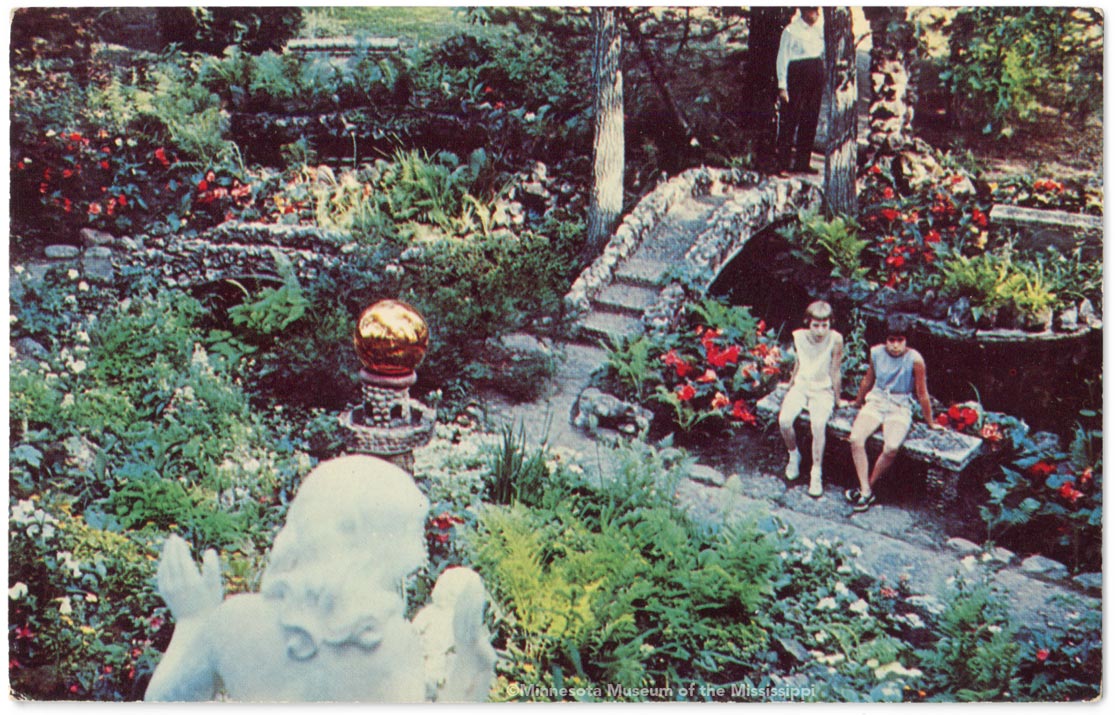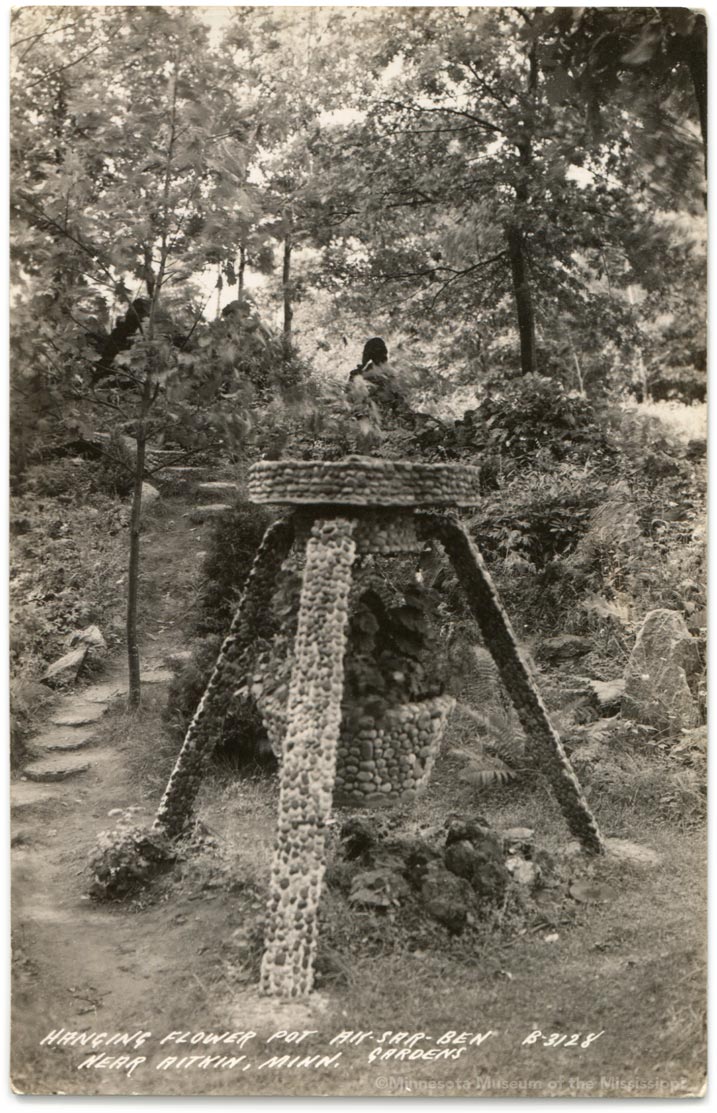
Star Garden
The northeast end of the lawn is dominated by the four-pointed star garden, a large rock-walled terrace with Classical urns at its points and a stone encrusted raised planter at its center. The interior points of the star are marked by four large round cobbles. Behind the star garden is the start of a rock-lined path leading up the hill past a miniature waterfall to several terraced sitting places which gave visitors a picturesque vista overlooking the lawn down to the large planter at the edge of the slope down to the lake.
Eveless Paradise
Visitors to the garden entered from a parking area at the east end of the property. At the edge of the lawn in line with a row of bushes, a rock-encrusted sign with hanging flower baskets welcomed visitors to the "Eveless Paradise" of Ak-Sar-Ben, with the Vogt brothers' home town of Omaha commemorated at the top. For 25 years the garden was indeed a bachelor summer home for Arnold and Hugo alone, and the sole focus of their attention. But in 1944 56-year old Arnold married Dora Jones, a widow six years younger who had two grown sons. Dora worked as a chief operator at the Omaha Bell telephone exchange, but after marriage it seems that she was able to quit her full-time job and join Arnold and Hugo in their summer retreat at Ak-Sar-Ben.
The hanging planters and sign are long gone but the rest of the sign still stands in 2017.
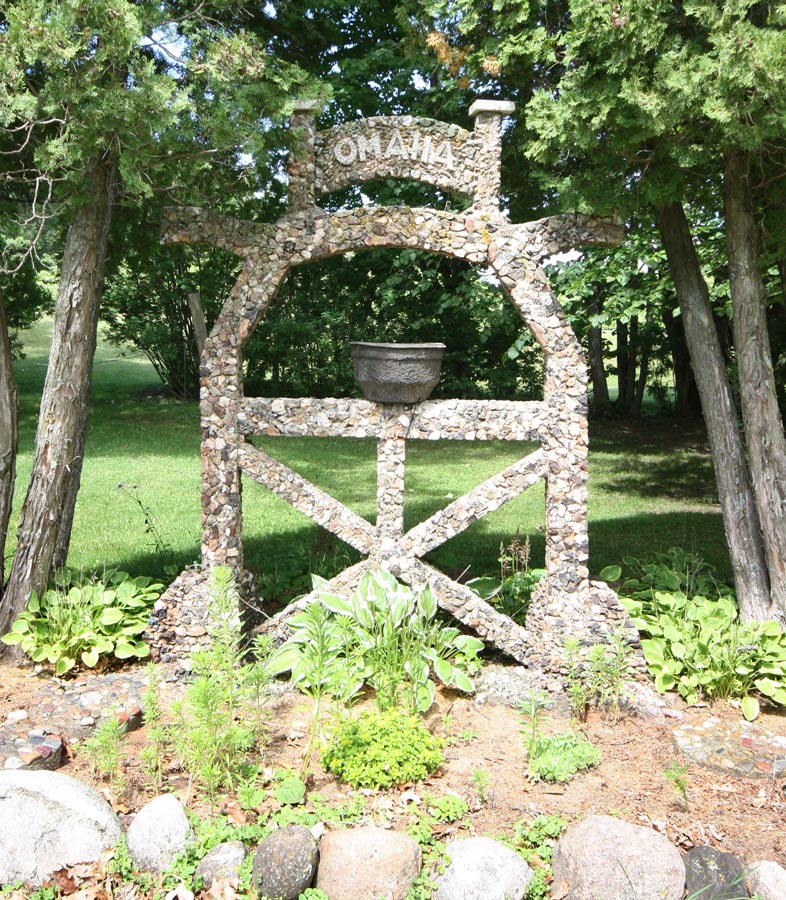
Paul Bunyan's Dinner Bell
In the corner of the lawn near the Name Plate, a rock pyramid supported an antique school bell with an inset stone label: "Paul Bunyan's Dinner Bell - 1885". The structure is no longer standing, but in the postcard photo it appears similar in construction to the wishing well, with a base of rugged iron ore chunks and a platform made of dark lumps of sintered ore, materials probably gathered from the tailing piles of the Iron Range about a hundred miles north of Ak-Sar-Ben. The bell does not appear any larger or more exaggerated than any other school or tower bell, but perhaps the joke here is that for Paul Bunyan this would a little handbell like those used by many mothers to call children in for supper.
Rock Garden
Hugo Vogt began building the rock garden in about 1931-1932. He excavated a low area at the foot of the hill for a meandering goldfish pond and built small bridges of concrete covered in stones across the pool. On the hillside above he added miniature caves and rock cairns to experiment and learn concrete and stone construction. In the postcard photo below, a rock arch is a sort of entry gate to the rock garden area. Across the bridge, the path diverged left to a concrete bench and stepping stone path up the hillside, or right across another smaller bridge to an open area. From here another stepping stone path climbs the hill to a tiny bridge over a trickling stream coming from the miniature cave to where the path connects to the first stepping stone path. The rock cairns and rough wall at the back of the rock garden likely mark the north end of the Vogt's property and the roadway beyond.
The minimal stepping stone paths would have been fine for the small number of visitors the rock garden attracted in its early years. But as Ak-Sar-Ben's popularity increased to thousands of visitors each summer, the rock garden may have required more-defined pathways to discourage pedestrians from going "off-trail" as the man crawling under the bridge in the photo above is doing. Perhaps this is why there is a sign half-visible in the postcard below near the entrance to the rock garden warning parents to keep children in hand, lest rambunctious tots trample the rock garden flowers or trip into the little pools. An incongrous visitor to the garden is a small statue of Bibendum, the Michelin Man tire mascot which is hiding in the shadows between the two bridges in the image below.
A 1960s color postcard looks down from the hillside to the lush plantings and dense scene of the rock garden. The edge of the lawn is visible just beyond the plantings and the arch entryway to the rock garden is at the top right. The miniature light house with gold gazing ball top and female sculpture close to the camera are later additions to the rock garden after the postcard images above were taken. The bench where the children are sitting features a pattern of large stone triangles around the edge with smaller round cobbles in the center, similar to the stone tables built around the castle.
Hanging Flower Pot
At the foot of the hill at the east end of the rock garden stands a rock flower basket hanging from a sturdy tripod stone structure. This area at the east end of the rock garden is shaded by dense trees, with enough shade and moisture to support ferns growing among the rocks. Beyond the flowerpot in the postcard photo below, the stepping stone path leads up the hill to the tiny bridge near the miniature cave seen in the black and white photos above. The line of cairns and rock wall barely visible to the right of that likely mark the edge of the Vogt's property.
The hanging flowerpot still stands in 2017 surrounded by ferns at the far end of the rock garden. The little bridges built nearly 85-some years ago still stand as well, though the goldfish pools are now dry and filled with ferns and lillies. The concrete bench in the foreground has lost its seat, but a similar bench just outside the photo to the left (where the two kids in the previous postcard photo are sitting) is still intact.

